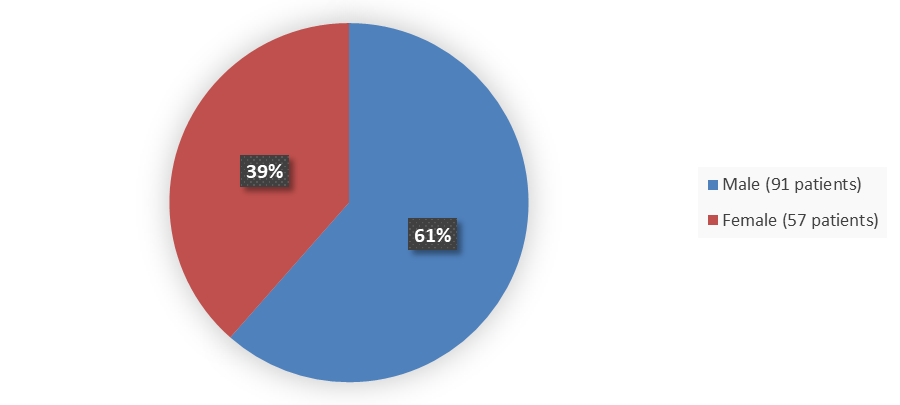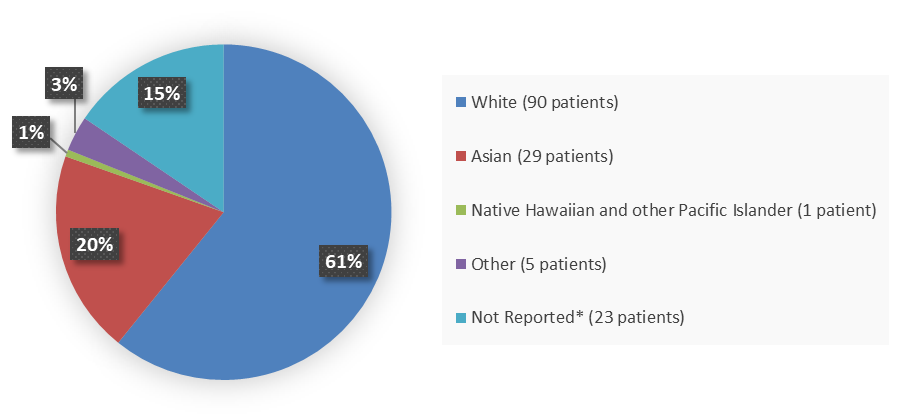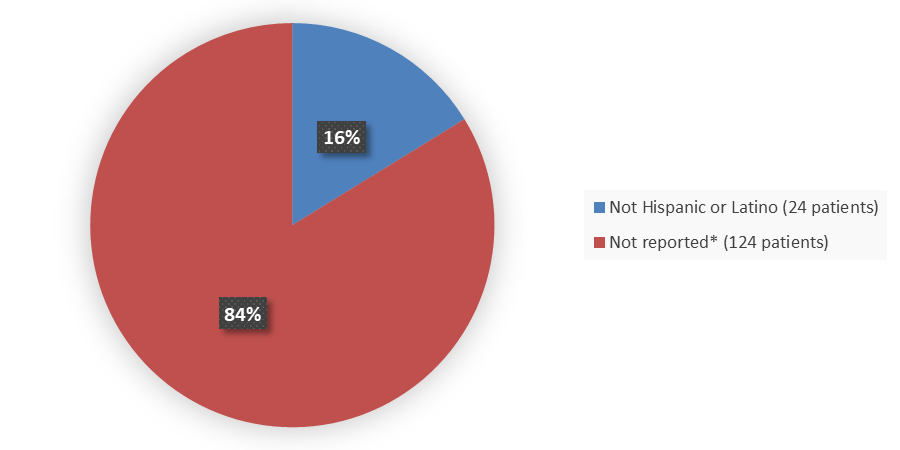Drug Trials Snapshots: EPKINLY
HOW TO USE THIS SNAPSHOT
The information provided in Snapshots highlights who participated in the key clinical trials that supported the original FDA approval of this drug, and whether there were differences among sex, race, age, and ethnic groups. The “MORE INFO” bar shows more detailed, technical content for each section. The Snapshot is intended as one tool for consumers to use when discussing the risks and benefits of the drugs.
LIMITATIONS OF THIS SNAPSHOT
Do not rely on Snapshots to make decisions regarding medical care. Always speak to your healthcare provider about the benefits and risks of a drug.
Some of the information in this Snapshot is for presentation purposes and does not represent the approved conditions of use of this drug. Refer to the EPKINLY Prescribing Information for all of the approved conditions of use of this drug (e.g., indication(s), population(s), dosing regimen(s), safety information).
Snapshots are limited to the information available at the time of the original approval of the drug and do not provide information on who participated in clinical trials that supported later approvals for additional uses of the drug (if applicable).
EPKINLY (epcoritamab-bysp)
ep-KIN-lee
Genmab US, Inc.
Approval date: May 19, 2023
DRUG TRIALS SNAPSHOT SUMMARY:
What is the drug for?
EPKINLY is a prescription medicine used to treat adults with certain types of large B-cell lymphoma (LBCL) that has come back (relapsed) or that did not respond to previous treatment (refractory), and who have already received two or more prior treatments for their cancer. The types of lymphoma include diffuse large B-cell lymphoma (DLBCL), DLBCL arising from a low-grade lymphoma, and high-grade B-cell lymphoma (HGBCL).
How is this drug used?
EPKINLY is given by a healthcare provider as an injection under the skin (subcutaneous injection), usually in the lower part of your stomach-area (abdomen) or thigh. EPKINLY treatment schedule is divided into cycles that are 28 days (4 weeks) long. EPKINLY is given every week during Cycles 1 to 3, every 2 weeks during Cycles 4 to 9, and every 4 weeks starting with Cycle 10.
The healthcare provider will decide how many treatment cycles will be given.
Who participated in the clinical trials?
The FDA approved EPKINLY based on evidence from the EPCORE NHL-1 trial (NCT03625037) in patients with DLBCL, not otherwise specified (NOS), including DLBCL arising from low grade lymphoma, and HGBCL, who continued to have disease or relapsed following at least two prior lines of treatment. EPKINLY’s safety was supported by data from 157 patients and its efficacy was supported by data from 148 patients. The patient data used for the approved indication were from 54 sites in 13 countries in North America and Europe.
The safety of AUGTYRO was evaluated in 351 patients who received at least one dose at the recommended phase 2 dose in TRIDENT-1. The median age of patients who received AUGTYRO was 56 years (range: 20 to 93); 59.5% female; 46.2% Asian, 43% White, 2.6% Black, 0.6% Native Hawaiian or other Pacific Islander, 0.3% American Indian or Alaska Native, 6.3% race not reported, and 0.9% unknown. Some of these patients provided data for the assessment of the benefits of AUGTYRO for ROS1-positive NSCLC.
How were the trials designed?
The FDA approved EPKINLY based on evidence from a single-arm clinical trial in patients with certain types of LBCL, including DLBCL, DLBCL arising from low grade lymphoma, and HGBCL, that has come back (relapsed) or that did not respond to previous treatment (refractory), and who have already received two or more treatments for their cancer.
The benefit of EPKINLY was evaluated by measuring the percentage of patients who achieved complete or partial shrinkage of their tumors (overall response rate) and by measuring the duration of that benefit (duration of response).
How were the trials designed?
The efficacy and safety of EPKINLY were evaluated in an open-label, multi-cohort, multicenter, single-arm trial in patients with relapsed or refractory LBCL after two or more prior therapies that did not work or were no longer working.
Patients received EPKINLY subcutaneously according to the step-up dosing schedule with 0.16 mg on Day 1 of Cycle 1, 0.8 mg on Day 8 of Cycle 1, and 48 mg on Day 15 and Day 22 of Cycle 1. EPKINLY was then administered at 48 mg weekly for Cycles 2 and 3, every two weeks for Cycles 4 to 9, and then every four weeks starting in Cycle 10.
The main efficacy endpoint for EPKINLY were the response rates (including overall response rate and complete response) and optimal dosing regimen, which were assessed by a blinded Independent Review Committee, who determined whether and when the tumor(s) shrunk completely or partially.
DEMOGRAPHICS SNAPSHOT
Figure 1 summarizes how many male and female patients were enrolled in the clinical trial used to evaluate the efficacy of EPKINLY.
Figure 1. Baseline Demographics by Sex (Efficacy Population)
Source: Adapted from FDA Review
Figure 2 summarizes the percentage of patients by race enrolled in the clinical trial used to evaluate the efficacy of EPKINLY.
Figure 2. Baseline Demographics by Race* (Efficacy Population)
Source: Adapted from FDA Review
Figure 3 summarizes how many patients by age were in the trial used to evaluate the efficacy of EPKINLY.
Figure 3. Baseline Demographics by Age (Efficacy Population)
Source: Adapted from FDA Review
Figure 4 summarizes how many patients by ethnicity were in the trial used to evaluate the efficacy of EPKINLY.
Figure 4. Baseline Demographics by Ethnicity* (Efficacy Population)
Source: Adapted from FDA Review
Who participated in the trials?
Table 1. Demographics of Patients in the Clinical Trial (Efficacy Population)
|
Demographic |
EPKINLY N=148 |
|
Sex, n (%) |
|
|
Male |
91 (61) |
|
Female |
57 (39) |
|
Race, n (%) |
|
|
White |
90 (61) |
|
Asian |
29 (20) |
|
Native Hawaiian or other Pacific Islander |
1 (<1) |
|
Other |
5 (3) |
|
Not reported* |
23 (16) |
|
Age, years |
|
|
Median |
64.5 |
|
Minimum, maximum |
22, 83 |
|
Age category, years, n (%) |
|
|
18 to 64 |
74 (50) |
|
65 to 74 |
45 (30) |
|
≥75 |
29 (20) |
|
Ethnicity, n (%) |
|
|
Not Hispanic or Latino |
24 (16) |
|
Not reported* |
124 (84) |
Source: Adapted from FDA Review
* Race or ethnicity data collection prohibited due to regional restrictions
What are the benefits of this drug?
In a clinical trial of 148 patients with DLBCL or HGBCL, 61% of patients had either complete shrinkage (38%) or partial shrinkage (23%) of their tumors. It is estimated that for 63% of patients, the response lasted nine months.
EPKINLY was approved under FDA’s accelerated approval program, which provides earlier patient access to a promising new drug while the company continues to conduct clinical trials to confirm that the drug works well.
What are the benefits of this drug (results of trials used to assess efficacy)?
Efficacy of EPKINLY was established based on overall response rate (ORR) as assessed by independent review committee and duration of response. The efficacy results are summarized in Table 2.
Table 2. Efficacy Results in EPCORE NHL 1 in Patients With DLBCL and HGBCL
|
Endpointa |
EPKINLY N=148 |
|
Overall response rateb |
|
|
Total, n (%) |
90 (61) |
| 95% CI |
52.5, 68.7 |
|
Complete response, n (%) |
56 (38) |
|
95% CI |
30.0, 46.2 |
|
Partial response, n (%) |
34 (23) |
|
95% CI |
16.5, 30.6 |
|
Duration of response |
|
|
Median (95% CI), months |
15.6 (9.7, NR) |
|
9-month estimatec % (95% CI) |
63 (51.5, 72.4) |
Source: Adapted from FDA Review
a Determined by Lugano criteria (2014) as assessed by independent review committee (IRC).
b Early response assessments were evaluated in the context of potential flare reactions. Of 90 patients who achieved an objective response, 9 patients had early flare reactions identified with objective response demonstrated on subsequent imaging per Lugano criteria.
c Kaplan-Meier estimate.
Abbreviations: CI, confidence interval; DLBCL, diffuse large B-cell lymphoma; HGBCL, high-grade B-cell lymphoma; NR, not reached
Were there any differences in how well the drug worked in clinical trials among sex, race, and age?
- Sex: EPKINLY worked similarly in males and females.
- Race: EPKINLY worked similarly in White and Asian patients.
- Age: EPKINLY worked similarly in patients younger and older than 65 years of age.
Were there any differences in how well the drug worked in clinical trials among sex, race, and age groups?
Table 3 summarizes efficacy results by subgroup. These exploratory analyses should be interpreted with caution.
Table 3. Subgroup Analysis of Overall Response Rate
|
Subgroup |
N |
Overall Response Rate % (95% CI) |
|
Sex |
||
|
Male |
91 |
55 (44, 65) |
|
Female |
57 |
70 (57, 82) |
|
Race |
||
|
White |
90 |
59 (48, 69) |
|
Asian |
29 |
62 (42, 79) |
|
Age, years |
||
|
18 to 64 |
74 |
53 (41, 64) |
|
65 to 74 |
45 |
67 (51, 80) |
|
≥75 |
29 |
72 (53, 87) |
Source: Adapted from FDA Review
What are the possible side effects?
EPKINLY can cause serious side effects including cytokine release syndrome (CRS), neurologic problems, infections, and low blood cell counts. EPKINLY can cause fetal harm and it is not known if it passes into breast milk.
The most common side effects of EPKINLY were CRS, tiredness, muscle and bone pain, injection site reactions, fever, stomach-area (abdominal) pain, nausea, and diarrhea.
What are the possible side effects (results of trials used to assess safety)?
Table 4 summarizes side effects that occurred in at least 10% of patients with relapsed or refractory LBCL in the EPCORE NHL-1 trial. The number of patients representing efficacy findings may differ from the number of patients representing safety findings due to different pools of study participants analyzed for efficacy and safety.
Table 4. Adverse Reactions (≥10%) in Patients With Relapsed or Refractory LBCL Who Received EPKINLY in EPCORE NHL-1
|
Adverse Reactiona |
EPKINLY N=157 |
|
|
All Grades % |
Grade 3 or 4 % |
|
|
Immune system disorders |
||
|
Cytokine release syndromec |
51 |
2.5b |
|
General disorders and administration site conditions |
||
|
Fatigued |
29 |
2.5b |
|
Injection site reactionse |
27 |
0 |
|
Pyrexia |
24 |
0 |
|
Edemaf |
14 |
1.9b |
|
Musculoskeletal and connective tissue disorders |
||
|
Musculoskeletal paing |
28 |
1.3b |
|
Gastrointestinal disorders |
||
|
Abdominal painh |
23 |
1.9b |
|
Diarrhea |
20 |
0 |
|
Nausea |
20 |
1.3b |
|
Vomiting |
12 |
0.6b |
|
Skin and subcutaneous disorders |
||
|
Rashi |
15 |
0.6b |
|
Nervous system disorder |
||
|
Headache |
13 |
0.6b |
|
Metabolism and nutrition disorders |
||
|
Decreased appetite |
12 |
0.6b |
|
Cardiac disorders |
||
|
Cardiac arrhythmiasj |
10 |
0.6b |
Source: Adapted from FDA Review
a Adverse reactions were graded based on CTCAE Version 5.0
b Only grade 3 adverse reactions occurred.
c CRS was graded using ASTCT consensus criteria (Lee et al., 2019).
d Fatigue includes asthenia, fatigue, and lethargy.
e Injection site reactions includes injection site erythema, injection site hypertrophy, injection site inflammation, injection site mass, injection site pain, injection site pruritus, injection site rash, injection site reaction, injection site swelling, and injection site urticaria.
f Edema includes edema, edema peripheral, face edema, generalized edema, and peripheral swelling.
g Musculoskeletal pain includes back pain, bone pain, flank pain, musculoskeletal chest pain, musculoskeletal pain, myalgia, neck pain, non-cardiac chest pain, pain, pain in extremity, and spinal pain.
h Abdominal pain includes abdominal discomfort, abdominal pain, abdominal pain lower, abdominal pain upper, and abdominal tenderness.
i Rash includes dermatitis bullous, erythema, palmar erythema, penile erythema, rash, rash erythematous, rash maculo-papular, rash pustular, recall phenomenon, seborrheic dermatitis, and skin exfoliation.
j Cardiac arrhythmias includes bradycardia, sinus bradycardia, sinus tachycardia, supraventricular extrasystoles, supraventricular tachycardia, and tachycardia.
Abbreviations: ASTCT, American Society for Transplantation and Cellular Therapy; CRS, cytokine release syndrome; CTCAE, Common Terminology Criteria for Adverse Events; LBCL, large B-cell lymphoma
Clinically relevant adverse reactions in <10% of patients who received EPKINLY included neurologic problems, sepsis, pleural effusion, COVID-19, pneumonia (including pneumonia and COVID 19 pneumonia), tumor flare, febrile neutropenia, upper respiratory tract infections, and tumor lysis syndrome.
Table 5 summarizes laboratory abnormalities in EPCORE NHL1.
Table 5. Select Laboratory Abnormalities (≥20%) That Worsened From Baseline in Patients With Relapsed or Refractory LBCL Who Received EPKINLY in EPCORE NHL-1
|
Laboratory Abnormalitya |
EPKINLYb |
|
|
All Grades % |
Grade 3 or 4 % |
|
|
Hematology |
||
|
Lymphocyte count decreased |
87 |
77 |
|
Hemoglobin decreased |
62 |
12 |
|
White blood cells decreased |
53 |
22 |
|
Neutrophils decreased |
50 |
32 |
|
Platelets decreased |
48 |
12 |
|
Chemistry |
||
|
Sodium decreased |
56 |
2.6 |
|
Phosphate decreasedc |
56 |
NA |
|
Aspartate aminotransferase increased |
48 |
4.6 |
|
Alanine aminotransferase increased |
45 |
5.3 |
|
Potassium decreased |
34 |
5.3 |
|
Magnesium decreased |
31 |
0 |
|
Creatinine increased |
24 |
3.3 |
|
Potassium increased |
21 |
1.3 |
Source: Adapted from FDA Review
a Laboratory abnormalities were graded based on CTCAE Version 5.0
b The denominator used to calculate the rate varied from 146 to 153 based on the number of patients with a baseline value and at least one post-treatment value.
c CTCAE Version 5.0 does not include numeric thresholds for grading of hypophosphatemia; all grades represent patients with lab value Lower Limit of Normal (LLN).
Abbreviations: CTCAE, Common Terminology Criteria for Adverse Events; LBCL, large B-cell lymphoma; NA, not applicable
Were there any differences in side effects among sex, race and age?
- Sex: No clinically meaningful differences in side effects were observed between males and females.
- Race: No clinically meaningful differences in side effects were observed in White and Asian patients.
- Age: No clinically meaningful differences in side effects were observed in patients younger and older than 65 years of age.
Were there any differences in side effects of the clinical trials among sex, race, and age groups?
Table 6. Overview of Adverse Events by Sex, Race, Age, and Ethnicity in Patients With Relapsed or Refractory LBCL Who Received EPKINKLY in EPCORE NHL-1
|
Demographic Variable |
EPKINLY, N=157 |
||
|
All Patients n (%) |
All Grades n/Ns (%) |
Grades 3 to 5 n/Ns (%) |
|
| Sex | |||
| Female |
63 (40.1) |
63/63 (100) |
38/63 (60.3) |
|
Male |
94 (59.9) |
93/94 (98.9) |
58/94 (61.7) |
| Race | |||
| Asian |
30 (19.1) |
29/30 (96.7) |
14/30 (46.7) |
| Native Hawaiian or other Pacific Islander |
1 (0.6) |
1/1 (100) |
1/1 (100) |
| Not reported |
24 (15.3) |
24/24 (100) |
13/24 (54.2) |
| Other |
6 (3.8) |
6/6 (100) |
4/6 (66.7) |
| White |
96 (61.1) |
96/96 (100) |
64/96 (66.7) |
| Age group, years | |||
| <65 |
80 (51.0) |
80/80 (100) |
54/80 (67.5) |
| 65 to 75 |
48 (30.6) |
47/48 (97.9) |
26/48 (54.2) |
| ≥75 |
29 (18.5) |
29/29 (100) |
16/29 (55.2) |
|
Ethnicity |
|||
| Not Hispanic or Latino |
24 (15.3) |
24/24 (100) |
14/24 (58.3) |
| Missing |
133 (84.7) |
132/133 (99.2) |
82/133 (61.7) |
Source: Adapted from FDA Review
Abbreviations: LBLC, large B-cell lymphoma; N, number of patients in treatment arm; n, number of patients meeting criteria; Ns, total number of patients for each specific subgroup and were assigned to that specific arm
GLOSSARY
CLINICAL TRIAL: Voluntary research studies conducted in people and designed to answer specific questions about the safety or effectiveness of drugs, vaccines, other therapies, or new ways of using existing treatments.
EFFICACY: How well the drug achieves the desired response when it is taken as described in a controlled clinical setting, such as during a clinical trial.
SUBGROUP: How well the drug achieves the desired response when it is taken as described in a controlled clinical setting, such as during a clinical trial.
PRESCRIBING INFORMATION




